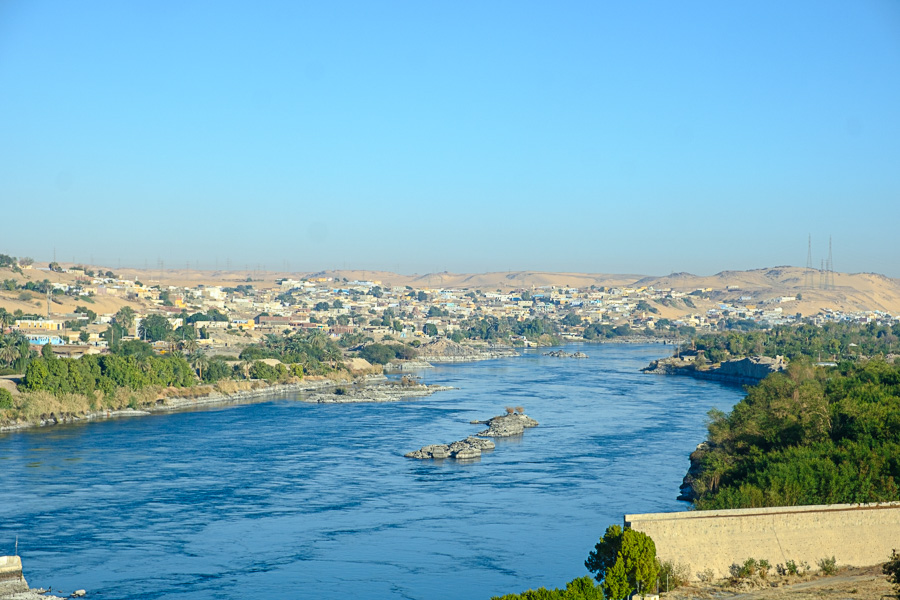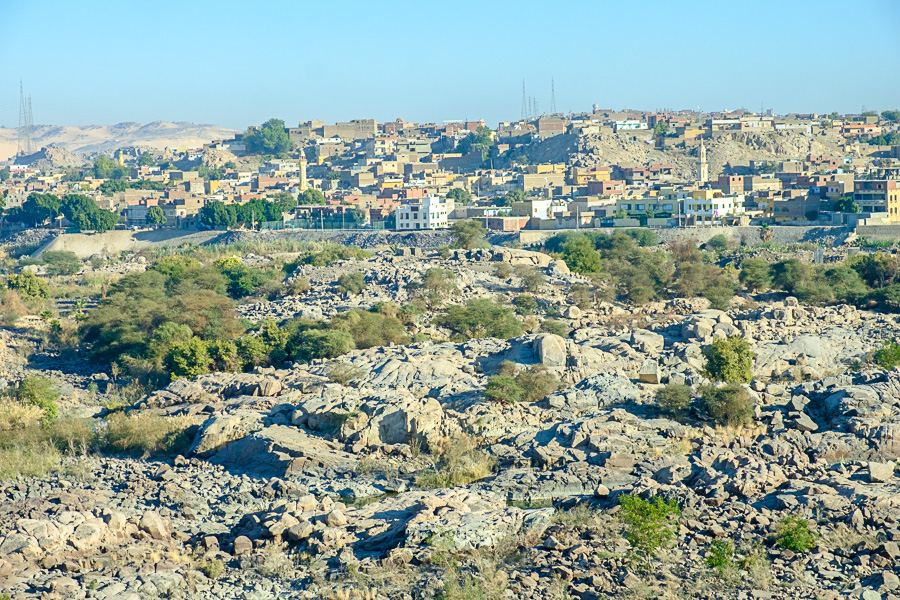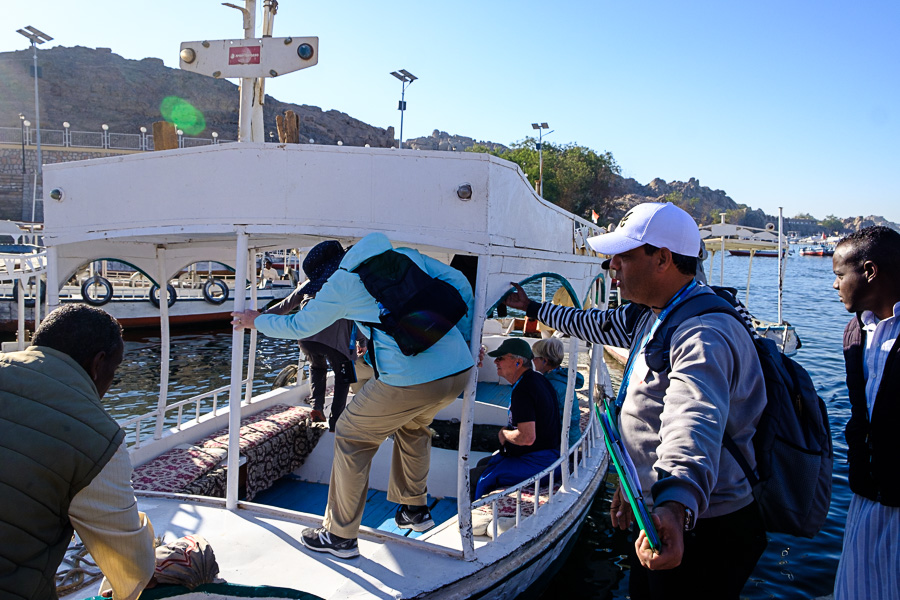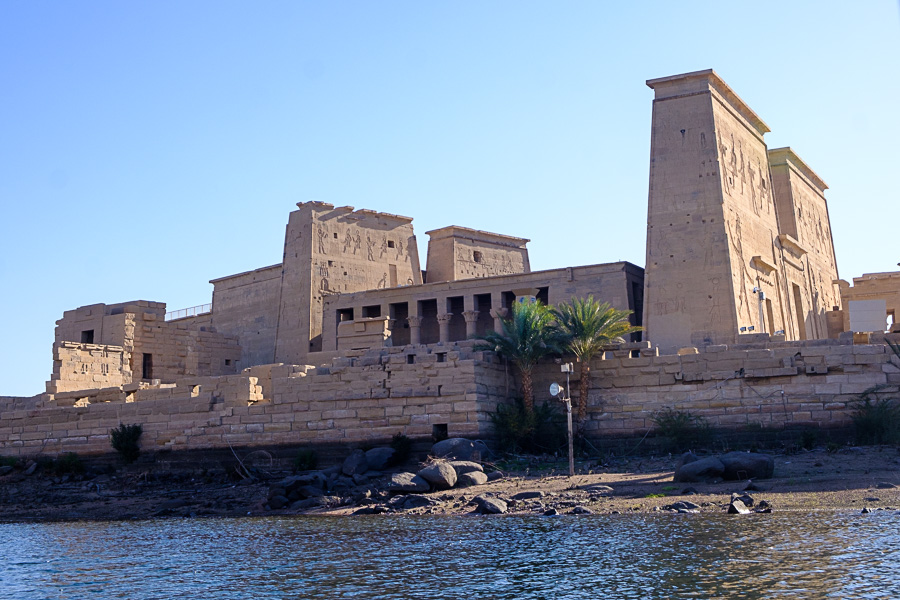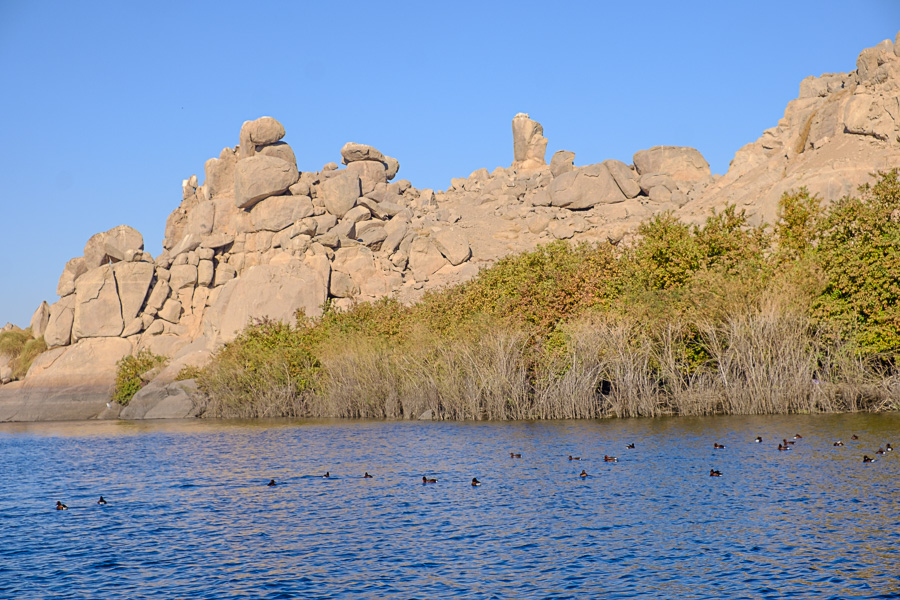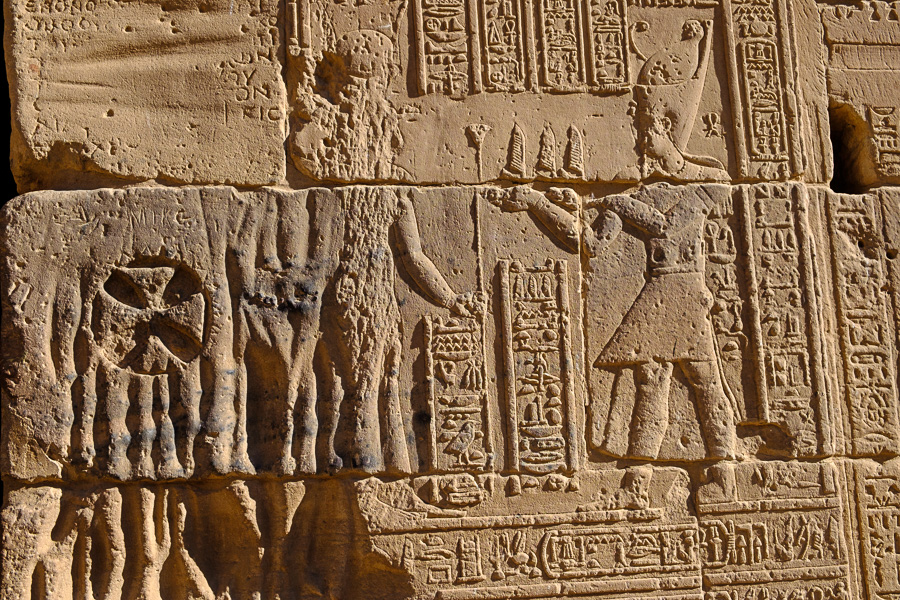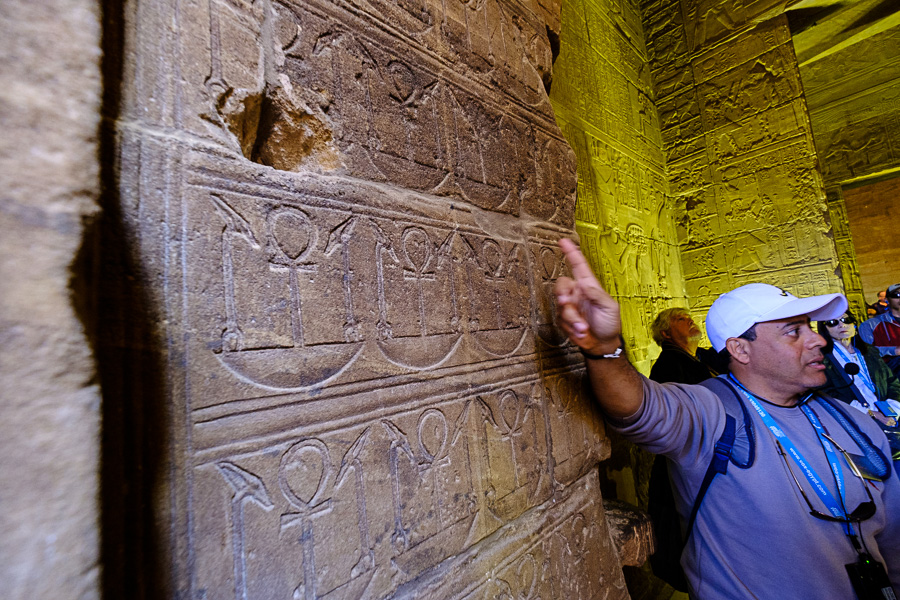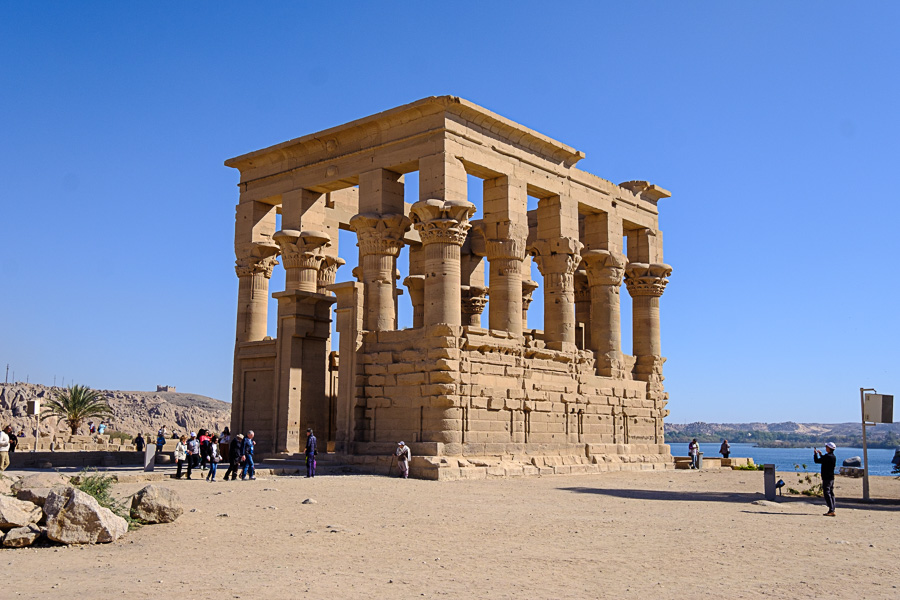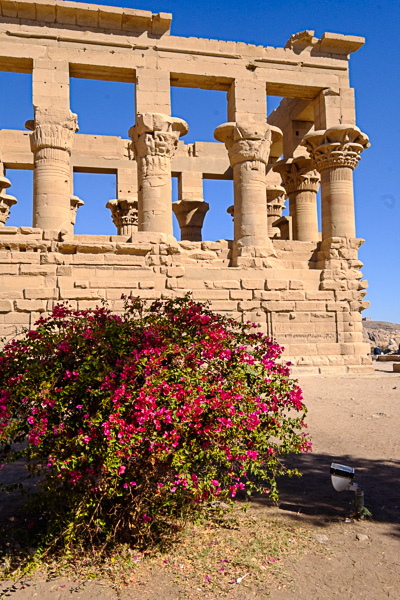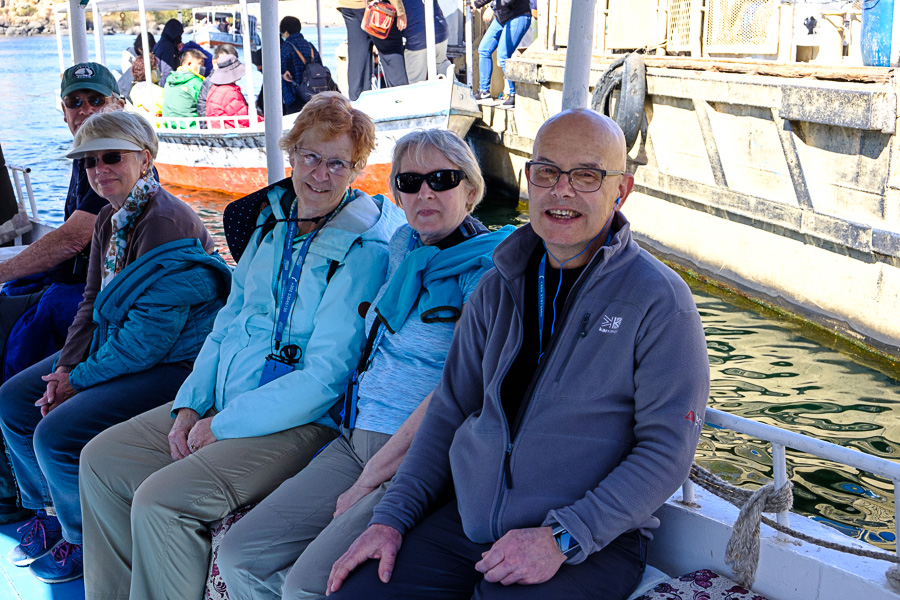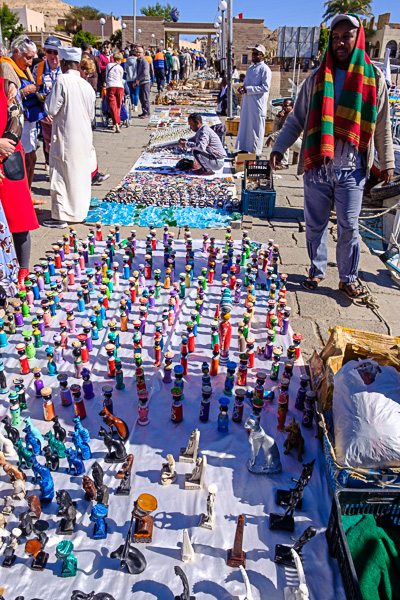Sure enough, the phone rang at 1:54 AM, our wakeup call for today’s outinThe hotel provided a box breakfast and there we were, on the bus with toothpicks to keep our eyes open, for our 5:55 AM flight to Aswan. Upon arrival we visited an interesting temple site and both Nile River dams at Aswan. The two subjects, separated by more than a thousand years historically but close neighbors geographically, are indeed related.
Since today has, so far, provided little of the excitement of yesterday, my thoughts will be focused on geography and history. Sorry ‘bout that. Skip today, you busy youngsters with kids and careers. You old fogies can pour another cup of coffee and read until boredom becomes so intense you can’t stand it any longer. But if you do continue, you’ll learn about the six civilizations that made their literal mark on the Temple at Philae.
Egypt today extends from Alexandria on the Mediterranean and then south to the First Cataract on the Nile and then to Lake Nasser and the border with Sudan. Ancient Egyptians traveled the length of the Nile until they hit the rapids that made further southerly progress difficult and impossible. Beyond the First Cataract was the territory of the Nubian people, although at various times Nubia was controlled by Egyptian pharaohs; at other times Nubia was independent but still an important trading partner. Beyond is modern-day Sudan and Ethiopia and the rest of Africa. In that sense the First Cataract marked what is sometimes called the “gateway to Africa.”
Egypt is an upside-down country. The Nile flows from South to North, one of the few rivers in the world to do so (the Red River in Minnesota is another). Hence the southern region of Egypt is called Upper Egypt and the northern region is Lower Egypt. Ancient Egyptians, unencumbered by magnetic compasses, visualized their country as having Upper Egypt at the top and Lower Egypt at the bottom, opposite of our visualization.
Philae is an island near the First Cataract. It was, in the latter years of the Egyptian religion, the site of an important temple. Egyptians of roughly 300 BCE worshiped the goddess Isis. To probably oversimplify and misstate the situation, Isis was the goddess of creation, Orsiris was the god of the underworld and resurrection and Horus was the god that guided the people of Egypt.
Isis was recognized way back in the early days of the Pharaohs, 3,000 BCE and before. She came into her own in the last millennium BCE and especially when Egypt was ruled by the Greeks and then the Romans, from roughly 300 BCE until maybe 400 CE. The Nubians also worshiped Isis and both the Greeks and Romans adopted Isis as part of their pantheons of gods. Christianity was responsible for stopping Isis worship in Egypt for the most part, but she still plays a role even today in modern paganism. That girl’s sure got staying power!
The temple at Philae was established as early as 500 BCE or before but most of the Egyptian inscriptions we saw today came after Alexander the Great arrived in 323 BCE. The Romans added their own touches, including columns and inscriptions that look to be straight out of Rome. The last inscription in Egyptian hieroglyphics, dating to 394 CE, was found at Philae.
Many of the faces of the gods, particularly Isis, have been marred and made unrecognizable. It seems that such vandalism was done by those who rejected those gods. One suggestion is that Christians, who came to Egypt in the first 500 years or so after Christ, were responsible. Christians did indeed use Philae as a place of worship. Their entries on the wall designate an area for this purpose.
But the story doesn’t end there. Napoleon made his ill-fated move to conquer Egypt and the eastern Mediterranean in 1802. We saw graffiti inscriptions in French carved into the temple walls like, “Jacque was here 1802.” So, this one site, Philae, tells the story of Egyptians, Nubians, Greeks, Romans, Christians and French.
Now to the dam story, and you can be darn sure we’ll cycle back to Philae before we’re done.
The British, who ruled Egypt until the 1920s, caused a dam to be constructed at the First Cataract in 1902. The purpose was to control the annual floods that the Nile brought to downstream areas and to produce low cost hydroelectricity to spur economic growth. It was increased in height twice to provide more power and better water control. Then, beginning in 1960, Egypt and its new partner, the Soviet Union, built what is now called the Aswan High Dam upstream of the Low Dam. (The U.S. and Britain declined to offer aid and assistance.)
Unfortunately, Philae, sitting upstream of the Low Dam (but downstream from the High Dam) was flooded, partially submerged all year and sometimes completely submerged. In 1960, the newly created UNESCO organization took on the project of rescuing Philae. They built a coffer dam around the island of Philea, sliced the architectural stone structures and rebuilt the temple on the nearby island of Agilkia Island. That’s what we saw today. We reached the island in a small boat powered by an outboard motor that dated from the 26th Dynasty if I don’t miss my guess.
As always, take my history lesson with a large grain of salt or two. I’ll correct myself as I learn more. Pitch in if you think I’m in error, please. I need all the help I can get.
Behind the Aswan High Dam is Lake Nasser, named for Gamel Abdel Nasser, President of Egypt from 1954 until his death in 1970. It’s the large body of water on which the good ship Steigneberger Omar el Khayam floats, the ship that will be our home tonight and the three following nights. We arrived on board at about 12 PM, had lunch at 1 PM and were “toes up,” as one of our members put it, shortly thereafter. We went topside for high tea at 4:30 and will have to suffer without sustenance until dinner at 7:30. Shipboard entertainment starts at 9. Never a dull moment!
We drove over both the Low and High dams and had nice views upstream and downstream from each. As you’ll see in the pictures, the land around Aswan is a desert of sand and rocks punctuated by a never-ending array of power transmission towers. You’ll also see a picture of the First Cataract. Imagine the raging Nile river at full strength coursing over those rocks.
The weather is a few degrees warmer than Cairo, maybe in the mid 70s. But when the breeze blows and when the sun sets it gets downright chilly.
Tomorrow we cruise to other archeological sites on and around Lake Nasser, but where and what will be figured out in the morning.
Oh, and the entertainment? Three Nubian guys doing traditional dance to the beat of two Nubian drummers. The dancers dragged most of the audience onto the floor for some fun dancing to great Egyptian rhythms.

